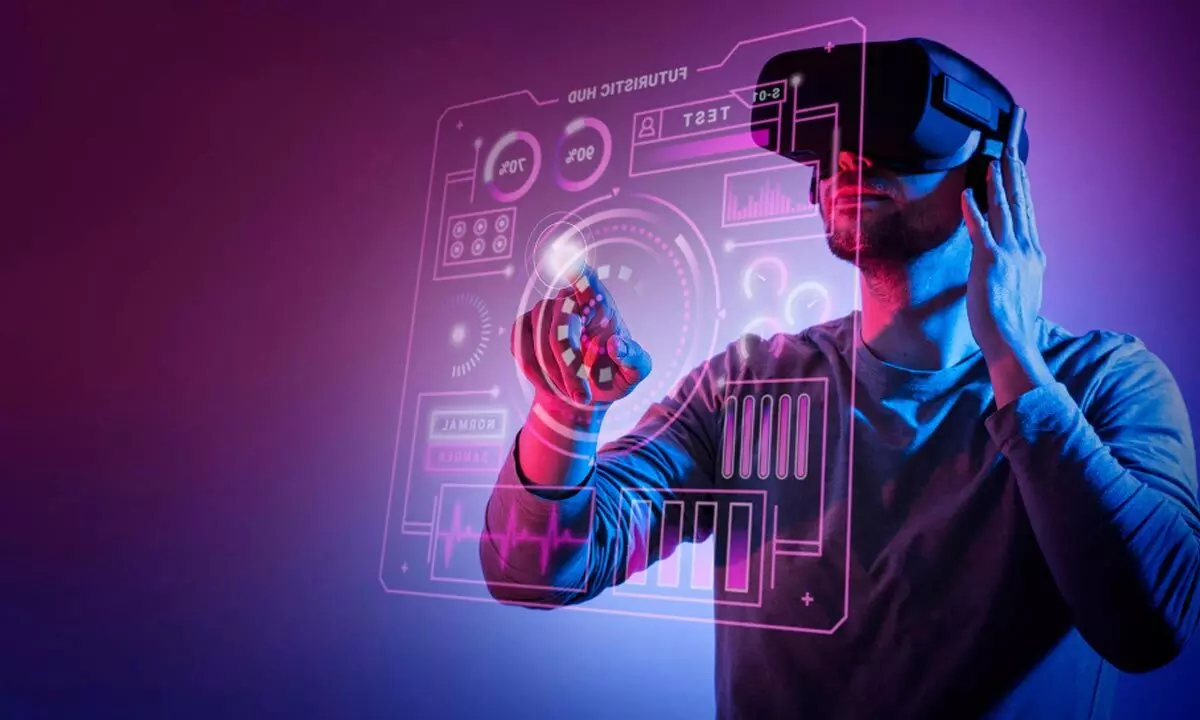Metaverse: A craze or the future?
image for illustrative purpose

Metaverse became a household word when Facebook rebranded its corporate identity to Meta in October 2021, and announced plans to invest at least $10 billion in the concept that year. In addition to Meta, tech giants including Google, Microsoft, Nvidia and Qualcomm are also investing billions of dollars in the concept. Management consultancy McKinsey & Company has bullishly predicted that the metaverse economy could reach $5 trillion by 2030. E-commerce is expected to be the dominant engine, with gaming, entertainment, education and marketing in the metaverse also becoming important sectors.
Today, companies use the term to refer to many different types of enhanced online environments.
These range from online video games like Fortnite to fledgling virtual workplaces like Microsoft, Mesh or Meta, Horizon Workrooms to virtual dressing rooms and virtual operating rooms. Rather than a single shared virtual space, the current version of the metaverse is shaping up as a multiverse: A multitude of metaverses with limited interoperability as companies jockey for position.
The combination of uncritical enthusiasm for the metaverse and deep uncertainty about how it will pan out has sparked some backlash. Industry watchers have questioned if the metaverse will ultimately be much different from the digital experiences we have today - or, if it is, whether the masses will be willing to spend hours a day in a headset navigating digital space.
Other futurists, however, argue that while it is early days for the metaverse and fundamental technical barriers still exist, the metaverse will happen. And, it will arrive with a big bang.
Because the metaverse is largely unbuilt, there is little agreement on how it will work. Broadly speaking, however, the metaverse is a digital ecosystem built on various kinds of 3D technology, real-time collaboration software and blockchain-based decentralized finance tools.
Factors such as the degree of interoperability among virtual worlds, data portability, governance and user interfaces will depend on how the metaverse pans out. The metaverse remains a domain of niche applications, used by consumers for entertainment and gaming, but stopping well short of an all-encompassing virtual reality.
The metaverse is controlled by large competing ecosystems - for example, Apple and Android meta worlds - with limited interoperability. The metaverse is a dynamic, open and interoperable space, much like the internet but in 3D.
Two technologies considered important to the development and growth of the metaverse are virtual reality and augmented reality - Virtual reality is a simulated 3D environment that enables users to interact with a virtual surrounding in a way that approximates reality as perceived through our senses. This approximation of reality is now typically accessed through a VR headset that takes over a user field of vision. Haptics, including gloves, vests and even full-body tracking suits, enable more lifelike interaction with the virtual environment.
Augmented reality is less immersive than VR. It adds digital overlays on top of the real world via a lens of some type. Users can still interact with their real-world environment. The game Pokémon Go is an early example of augmented reality (AR). Google Glass and heads-up displays in car windshields are well-known consumer AR products. At present, many of the metaverse-like experiences offered by gaming platforms such as Roblox, Decentraland and Minecraft can be accessed through browsers or mobile devices and a fast internet connection.

